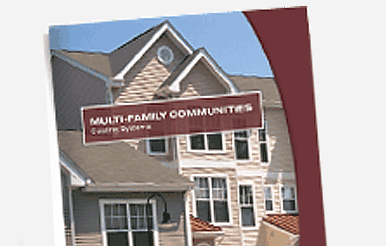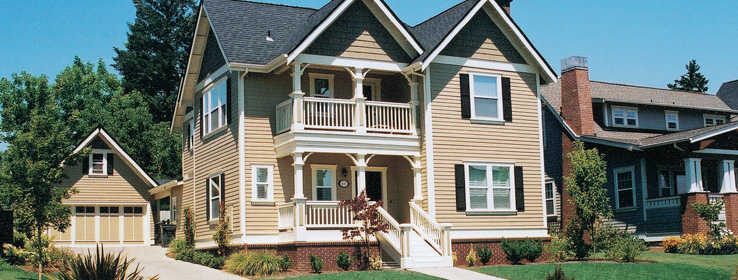The processes, programs, products and practices every design professional needs to recognize.
More and more, clients demand that interior designers and architects incorporate sustainable design principles, practices and products into their projects. But what do all these eco-buzzwords really mean? We'll help you wade through the green jungle by spotlighting the eco-lingo you should know.
Processes
Adaptive reuse: the process of adapting or redeveloping old structures for new uses to reduce sprawl, preserve historically significant architecture and conserve resources.
Biodegradable: a material that breaks down with the assistance of micro-organisms.
Carbon footprint: the accumulated greenhouse gases your activities produce (and how they affect global warming). Calculate your personal carbon footprint at carbonfootprint.com.
Degradable: material that breaks down through chemical reactions rather than through the activity of micro-organisms.
Graywater: effluent from the shower, bath, sinks and washing machines (does not contain sewage) that may be reused for flushing toilets and watering lawns.
- Lifestyles of Health and Sustainability (LOHAS): describes an estimated $209 billion U.S. market segment focused on health, the environment, social justice, personal development and sustainable living. Approximately 19 percent of the adults in the United States, or 41 million people, are currently considered LOHAS consumers. LOHAS companies practice "responsible capitalism" by providing goods and services using economic and environmentally sustainable business practices.
Passive solar heating and cooling: designs that use the sun's energy to heat and cool by taking advantage of natural energy characteristics. According to the U.S. Department of Energy, passive solar design strategies, such as strategically placed windows, can cut heating bills by as much as 50 percent.
Phantom load: household electrical items that use energy when turned off. To lighten the load, homeowners should unplug rarely used appliances and unused chargers, and unplug all appliances and electronics when going out of town.
Sustainability: products or practices that don't harm the environment, are produced with a minimal amount of energy and packaging, and may be refurbished or recycled after use.
Programs
- ENERGY STAR ® : a joint program of the U.S. Environmental Protection Agency and the U.S. Department of Energy that identifies energy-efficient products and practices. In 2007, Americans using ENERGY STAR-certified products avoided greenhouse gas emissions equivalent to 27 million cars – while saving $16 billion in utility bills. Learn more about ENERGY STAR.
- Forest Stewardship Council : a nonprofit organization that sets high standards for the environmental, social and economic management of forests. FSC-certified products must meet or exceed these standards.
Green Label: the Carpet and Rug Institute gives this designation to low-VOC (volatile organic compounds) carpet, cushions and adhesives. The very lowest-VOC products are labeled Green Label Plus.
- Leadership in Energy and Environmental Design (LEED) Green Building Rating System™ : a third-party certification program and the nationally accepted benchmark for the design, construction and operation of high-performance green buildings. LEED gives building owners and operators the tools they need to have an immediate and measurable impact on their buildings' performance. LEED promotes a whole-building approach to sustainability by recognizing performance in five key areas of human and environmental health: sustainable site development, water savings, energy efficiency, materials selection and indoor environmental quality. Learn what the U.S. Green Building Council has in store for LEED in 2009.
SEER (Seasonal Energy Efficiency Ratio): a measure of efficiency for air conditioners or heat pumps. The SEER rating is the British thermal unit of cooling output during a typical cooling-season divided by the total electric energy input in watt-hours during the same period. Current federal law mandates that every central split cooling system manufactured or sold in the United States today have a seasonal energy efficiency ratio of at least 13.
Practices
Fair trade: a movement to reduce global poverty and promote sustainability by ensuring that exports from developing countries are sold at a fair price, workers are paid fair wages, manufacturers engage in sustainable practices and business owners promote healthy working conditions.
Freecycling: the act of giving away, at no cost, usable but unneeded items instead of throwing them in a landfill. This term is most often associated with online groups that offer items to members at no cost.
Greenwash: the act of misleading consumers in order to create a pro-environmental image regarding environmental practices or the environmental benefits of a product or service.
Products
Compact fluorescent lamp (CFL): an energy-saving light bulb rapidly replacing traditional incandescent bulbs.
Low- or zero-VOC paint: water-based latex paints that emit fewer harmful VOCs than regular latex paint. To be considered low-VOC, flat paint levels can't exceed 100 grams of VOCs per liter and non-flat paint (semi-gloss, gloss, eggshell or satin) can't exceed 150 grams of VOC per liter. Low- or no-VOC paint may also contain antimicrobial properties which resist mildew, bacteria and other microbes while maintaining durability and a fresh appearance longer. Learn more about Sherwin-Williams green solutions.
Organic cotton and wool: eco-friendly bedding choices for sheets and mattresses. Be careful, though; cotton can be treated with toxic dyes and synthetic chemicals in the finishing process and still be labeled "organic."
Natural latex: a type of mold- and mildew-resistant latex used in mattresses that contains no toxic substances and emits neither fumes nor ozone-depleting gases. Its hypoallergenic qualities make it a good choice for allergy sufferers.










